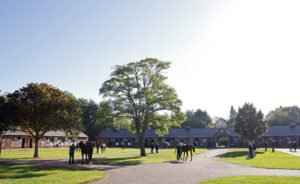Keen to advertise its young stallion Wootton Bassett, Haras d’Etreham headed to the 2014 Arqana August Sale with two of his first-crop yearlings. For one reason or another, the stallion had failed to capture the imagination of breeders, for all that the son of Iffraaj was a Group 1-winning two- year-old, meaning that there were just 17 foals in his first crop. But between them, the chosen duo did their bit to remedy the situation, each selling for six figures off a €6,000 fee, and when one of them turned out to be champion Almanzor, Wootton Bassett was on his way.
Six years on and the first-season sire promotion is again in full swing at the de Chambure family’s Haras d’Etreham. However, the situation is very different. In Almanzor, the farm sits behind a young name in real demand, one whose popularity saw his first foals average close to 100,000gns at auction last winter. As such, he will be well represented when the market takes its next look at him at the upcoming Arqana Deauville Select Yearling Sale, now due to take place on September 9 -11.
All the while, the reputation of Wootton Bassett continues to grow by the year. He is in the midst of his best season yet, with a tally of seven stakes winners contributing to a place among Europe’s leading sires. Such momentum has not gone unnoticed; last week it was announced that Coolmore had purchased the son of Iffraaj to join its roster in Ireland.
Etreham can already boast a tale of champion sires and influential graduates, with its Normandy land once having hosted blue hen Urban Sea and her Classic-winning sibling King’s Best. Established during the early 1940s by Hubert de Chambure as a base to stand his Arc winner Verso II, it has remained at the forefront of the French bloodstock industry in the decades since and is now continuing to move forward under the direction of Nicolas de Chambure, Hubert’s great- grandson. In turn, he is supported by a long-serving team headed by manager Ludivine Marchand and commercial director Franck Champion.
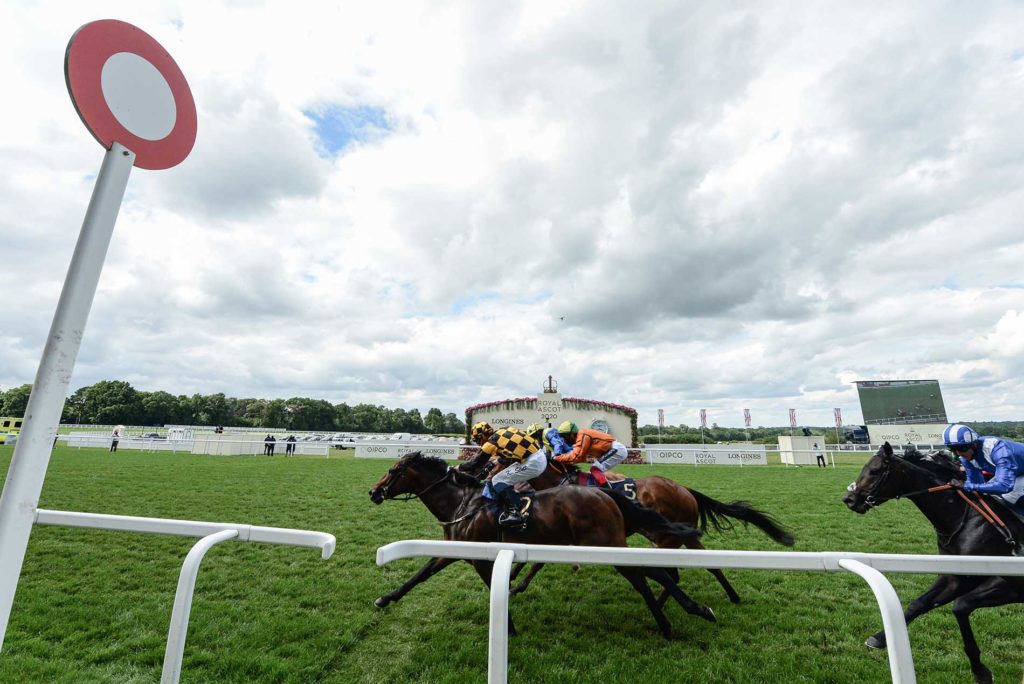
Hello Youmzain: new to Haras d’Etreham for 2021: Photo: Edward Whitaker
Wootton Bassett had been the latest in a long line of successful Flat stallions to have stood at the farm while in Saint Des Saints, the National Hunt arm at Haras de la Tuilerie is in possession of one of the most important jumps stallions of the recent era. And for 2021, there will be a new name on the Flat roster in the top sprinter Hello Youmzain, winner of the 2019 Betfair Sprint Cup and Diamond Jubilee Stakes for Kevin Ryan.
“Any French stud that gets a proper horse to stand will now get good support”
There is a real excitement in the idea of bringing a fast horse to the attention of French breeders. Purchased in partnership with Brendan and Jo Lindsay’s Cambridge Stud in New Zealand from breeder Jaber Abdullah in the days following his victory in the Sprint Cup at Haydock, Hello Youmzain justified the decision to keep him in training by winning the Diamond Jubilee Stakes at Royal Ascot on hie seasonal debut. He struggled with Newmarket’s undulations when fifth in the July Cup next time out but went on to find Deauville much more to his liking when an excellent second in last month’s Prix Maurice de Gheest in front of a French audience.
“We found out through Hubie de Burgh after Hello Youmzain won at Haydock that he probably could be bought,” says Nicolas de Chambure. “Obviously it was a high price but he’s a very good horse who offers a blend of speed and precocity and he makes a lot of sense. For us, it’s a great opportunity to stand a commercial horse but also in the long term to bring a top sprinter to France, something which is rarely done.
“He offers a blend of speed and precocity. He won a Group race at two [the Group 2 Criterium de Maisons- Laffitte] but also trained on to win Group 1 races at three and four. He is also the best by his sire Kodiac, who is starting well as a sire of sires, and that says a lot about his potential at stud.
“He’ll be the first Kodiac to stand in France but he’s also out of a Shamardal mare. He’s a special horse and he should attract mares from Britain and Ireland.”
It wasn’t that long ago that the idea of a French stallion attracting a volume of mares from Britain and Ireland would have come across as far fetched. For instance, when former Etreham resident Elusive City was at his peak around a decade ago and standing for €20,000, he was one of the most expensive stallions to reside in France.
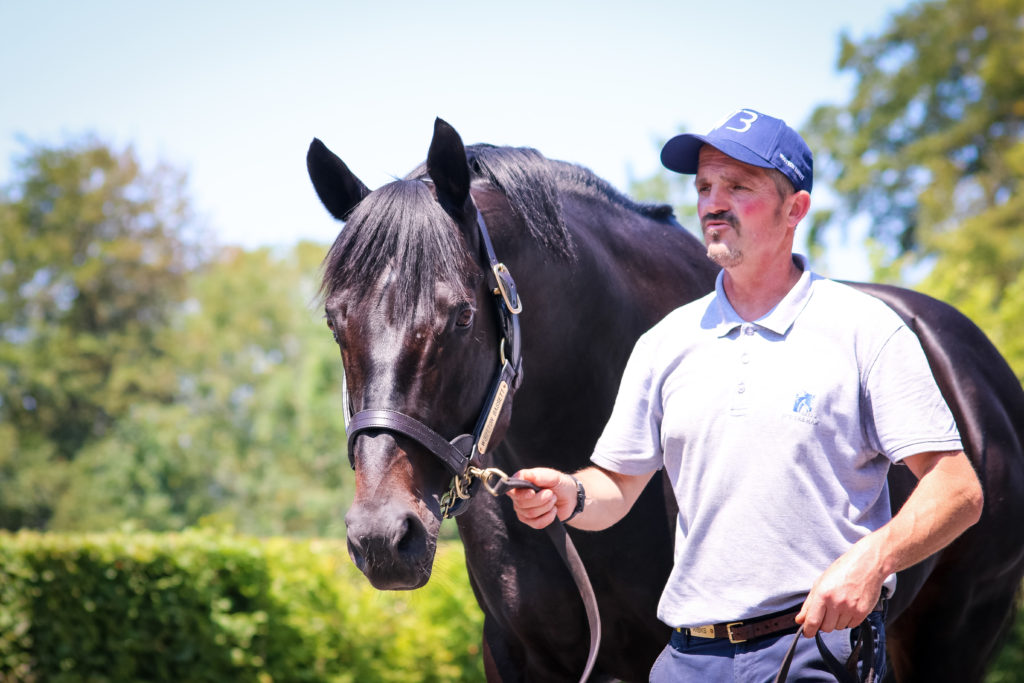
Wootton Bassett: sired Almanzor out of a small first crop and will now stand for Coolmore. Photo – Haras d’Etreham
Then thanks to the emergence of Siyouni, Le Havre, Kendargent and Wootton Bassett among others, matters swiftly changed.
“It is hard to believe that French breeders were coping with such a low quality of stallions,” says de Chambure. “Breeders were sending their mares to be bred to stallions outside France a lot more.
Now we have better stallions. Firstly, there were people who were keen to reinvest and take a risk on one to stand in France. And then little by little, breeders got behind these horses more. So it’s a mix of both those things, and then of course, a bit of luck as well.
“Any French stud today that gets a proper horse to stand will now get good support. And the British and Irish are not afraid to use them either.”
Recent seasons at Etreham have proven exactly that, not just through the support of Almanzor, who was one of the most exciting horses to retire to stud anywhere in the world in 2018, but also via the Group 1-placed sprinter City Light, who covered almost 140 mares in his first season this year at €7,000.
“City Light is the first son of Siyouni to stud in France and is standing at the same fee that his sire started at,” says de Chambure. “There is a great feeling around Siyouni, a lot of breeders have had great success with him. City Light was a very good horse, he’s very good looking and hopefully he can repeat some of his father’s success.”
By contrast, the launch of Wootton Bassett back in 2012 was not so straightforward.
Winner of the 2010 Prix Jean-Luc Lagardere for Richard Fahey, Wootton Bassett was installed at Etreham at a fee of €6,000. De Chambure had returned to manage his family’s farm only a year before following stints at Goffs in Ireland, Three Chimneys Farm in Kentucky and Lindsay Park in Australia, and in Wootton Bassett, he had seemingly secured an appealing prospect.
But support was not forthcoming and it was left to Etreham to breed his first major runner, Almanzor, out of his small first crop.
None of Wootton Bassett’s first four crops numbered more than 50 foals yet in addition to Almanzor, they have come to include fellow Group 1 performers Patascoy and Wootton. His 2017 crop of runners – also bred off a €6,000 fee – are now taking matters to another level as the source of seven stakes winners led by The Summit, who ran second in both the Poule d’Essai des Poulains and Prix du Jockey Club, and fellow Group 3 winner Wooded. Daughters Speak Of The Devil and Mageva also ran second and third in the Poule d’Essai des Pouliches; the former was beaten only a nose into second. All of which is good news for those breeders who supported Wootton Bassett this year at a career high of €40,000.
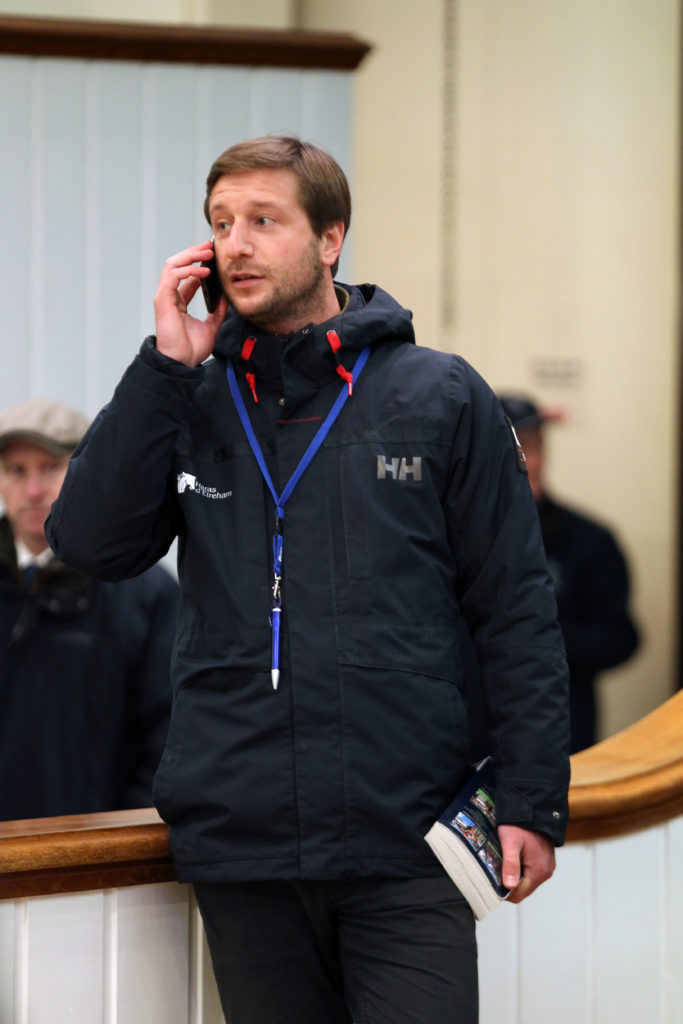
Nicolas de Chambure is continue to move Etreham forward – Photo: Laura Green/Tattersalls
“Wootton Bassett was hard work to start with,” says de Chambure. “He was from the first crop of Iffraaj and when his first two-year-olds turned three, some of them didn’t train on as much as people thought they would. So when Wootton Bassett retired, Iffraaj was a bit cold – obviously that has all changed since then.
“It was a struggle to attract mares to him. But little by little, people got to see that he threw a good type and so his books in years three and four started to increase. Even though he has had limited opportunity, he throws stakes horses every year and has a very high winners to runners ratio.
“The amazing thing about him is his consistency, and the evidence says he upgrades his mares.
“They’re tough, they’re very good mentally. They’re good doers and they enjoy their work. Not all of them are going to be champions but they are racehorses and they won’t disappoint their trainers.
“Over the past three years, he’s been covering more mares from England, Ireland and Germany. And there’s been further syndication all the way with more people buying into him.
“So I think the best is yet to come – we’re often saying that in this industry but everything suggests that in the next two to three years he will be one of the top sires in Europe. His future is exciting.”
As if to add fuel to that prediction, his first €20,000 crop has already thrown Richard Hannon’s Listed- winning juvenile Chindit and the exciting Deauville debut scorer Midlife Crisis.
The rise of Wootton Bassett to one of Europe’s most sought after stallions adheres to a tradition that took flight under the management of Nicolas de Chambure’s grandfather Roland.
“Everything suggests that he will be one of the top sires in Europe”
Roland de Chambure took over the stud from his father Hubert in the late 1950s and ran it with very much a commercial eye and an emphasis on internationalisation. By the late 1970s, Etreham housed champion sires Luthier and Fabulous Dancer as well as the influential Kaldoun and Top Ville. More recently, it stood Poliglote, whose stud record ranged from Arc heroine Solemia to top jumpers Politologue and Don Poli.
Wootton Bassett may now be ensconced in Coolmore but with several good-sized French crops to come, it is not too fanciful to imagine him following in the path of Luthier and Fabulous Dancer by becoming a French champion sire. Before then, however, attention turns to his son Almanzor and the promise of his first crop.
The backdrop of Covid-19, which forced the delay of the Arqana Select Sale by over a month, has made the task of launching a new stallion into the market that bit harder. But quality tends to hold steady in these instances and few young stallions can boast the kind of profile of Almanzor, whose championship record consists of Group 1 wins in the Prix du Jockey Club and the QIPCO Irish and British Champions Stakes. Backed by an ownership that includes SF Bloodstock alongside Etreham, Almanzor has stood every season for €35,000 and also shuttles to Cambridge Stud in New Zealand.
“We had high expectations for his first foals and he throws a very good type,” says de Chambure. “Almanzor has a lot of quality himself. Wootton Bassett has a Mr. Prospector-type head – he’s more masculine – but Almanzor is more refined.
“His foals have plenty of quality and bone, and they are also very athletic – we saw that at the sales last year [when his foals sold for up to €260,000]. He’ll have a good group of yearlings spread around all the major yearling sales.
“Obviously we’re in a tricky year and we know in difficult times that people tend to gravitate towards proven stallions, but Almanzor is an exciting young stallion and offers everyone involved much to look forward to.”
Of course, a stallion farm is nothing without its mares. A broodmare band that numbers approximately 90 lives at Etreham, some of whom boast serious connections; current inmates include Group 2 winner Mission Impassible, a daughter of Nunthorpe Stakes heroine Margot Did who is a sister to this season’s high-class French filly Magic Attitude, and Purely Priceless, a daughter of champion Peeping Fawn.
In turn, Etreham graduates are flying the flag to great effect on the track. There is American champion Uni, a three-time Grade 1 winner who was purchased in utero for $230,000; Etreham has since sold her dam Unaided for €1.25 million. Closer to home, Duke Of Hazzard and San Huberto, both of whom were sold by the farm on behalf of outside clients, are Group 2 winners.
“It has been a good year despite what is happening in the outside world,” says de Chambure. “It’s been very enjoyable. Obviously we would have liked it to happen in a better climate but still, we’re very lucky that it’s going really well. It helps the stud and also to keep a good dynamic going in the French market.”
Almanzor set to take centre stage at Arqana
For 20 consecutive years, Etreham led all vendors at the Deauville August Sale under the direction of Roland de Chambure and then his son Marc, and today, it continues to hold its position as one of France’s premier sales consigners.
A regular top three vendor at recent renewals of the Arqana August Sale, the farm turned over €3.455 million in sales last year, its total bolstered by a Galileo colt out of Steip Amach who made €800,000 to Phoenix Thoroughbreds.
Steip Amach, a dual Group 3 winner for Jim Bolger, is again represented in the Arqana consignment for 2020, on this occasion as the dam of a well regarded filly by Dubawi (lot 252). Also well thought of within the 31-strong draft is a Lope De Vega colt out of Listed winner Miss Infinity (160), an American Pharoah relation to Lammtarra (228; colt) and a Siyouni half-sister to Duke Of Hazzard (289).
Almanzor is also unsurprisingly well represented. The headline act on paper is the half-brother to champion Uni (274) but the group also includes a half-sister to Listed winner Eliade (79), who is out of a half-sister to Group 1 winners Call The Wind, With You and We Are, a half-sister to Group 3 winner Suphala who is a granddaughter of top miler Sophisticat (231), a half-brother to the Classic-placed Dice Roll (458) and the half-siblings to Group 2 winners Sans Equivoque (255; colt) and San Huberto (460; filly).
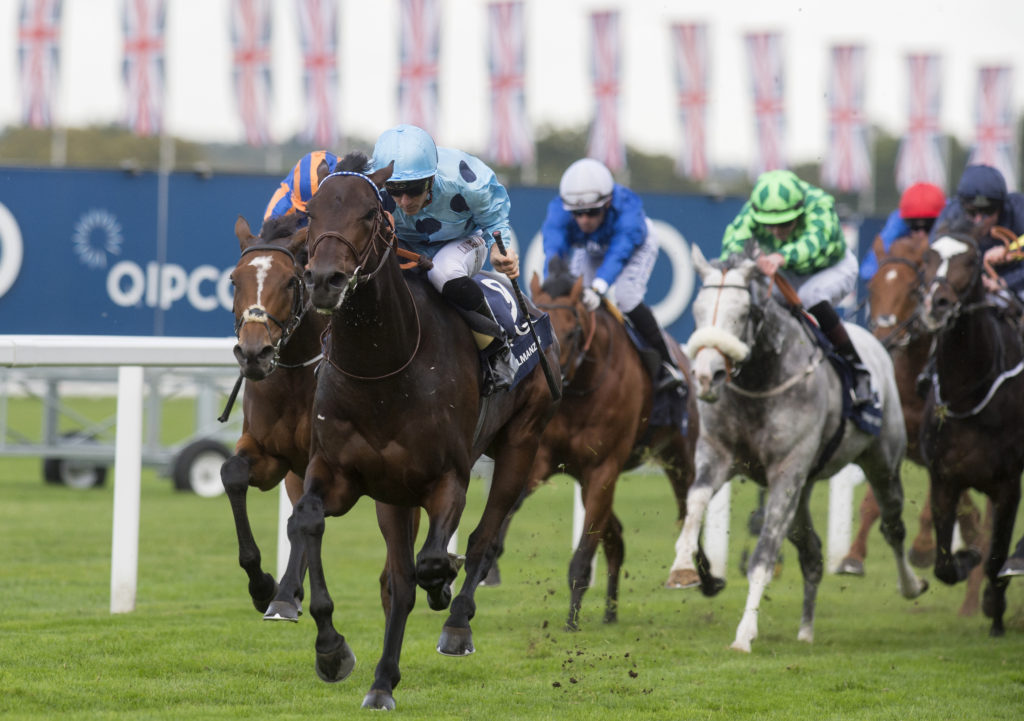
Almanzor swoops to beat Found in the 2016 QIPCO Champions Stakes – Photo: George Selwyn
The Arqana Select Yearling Sale is traditionally the curtain-raiser to the European yearling sales season but such is the outside world that the auction house understandably took the decision early on to push the sale back to September. Yet while upheaval to the yearling sales calendar is far from ideal, for some horses the move could end up being beneficial.
“It’s difficult in that everything changes every week or so,” says Nicolas de Chambure. “That obviously makes it very difficult for the sale companies to make decisions.
“But in terms of horse management, it’s been great to have breaks. For us, it gives the extra time to prepare for the sales after the breeding season. The extra month or so also gives the market additional time to recover, for owners to run their two-year-olds and for travel to become a bit easier. It just gives that bit more time to get the whole thing going.
“Still, we have to take it day by day. But hopefully the whole situation will have improved by the time of the sale and people will be able to travel.”



